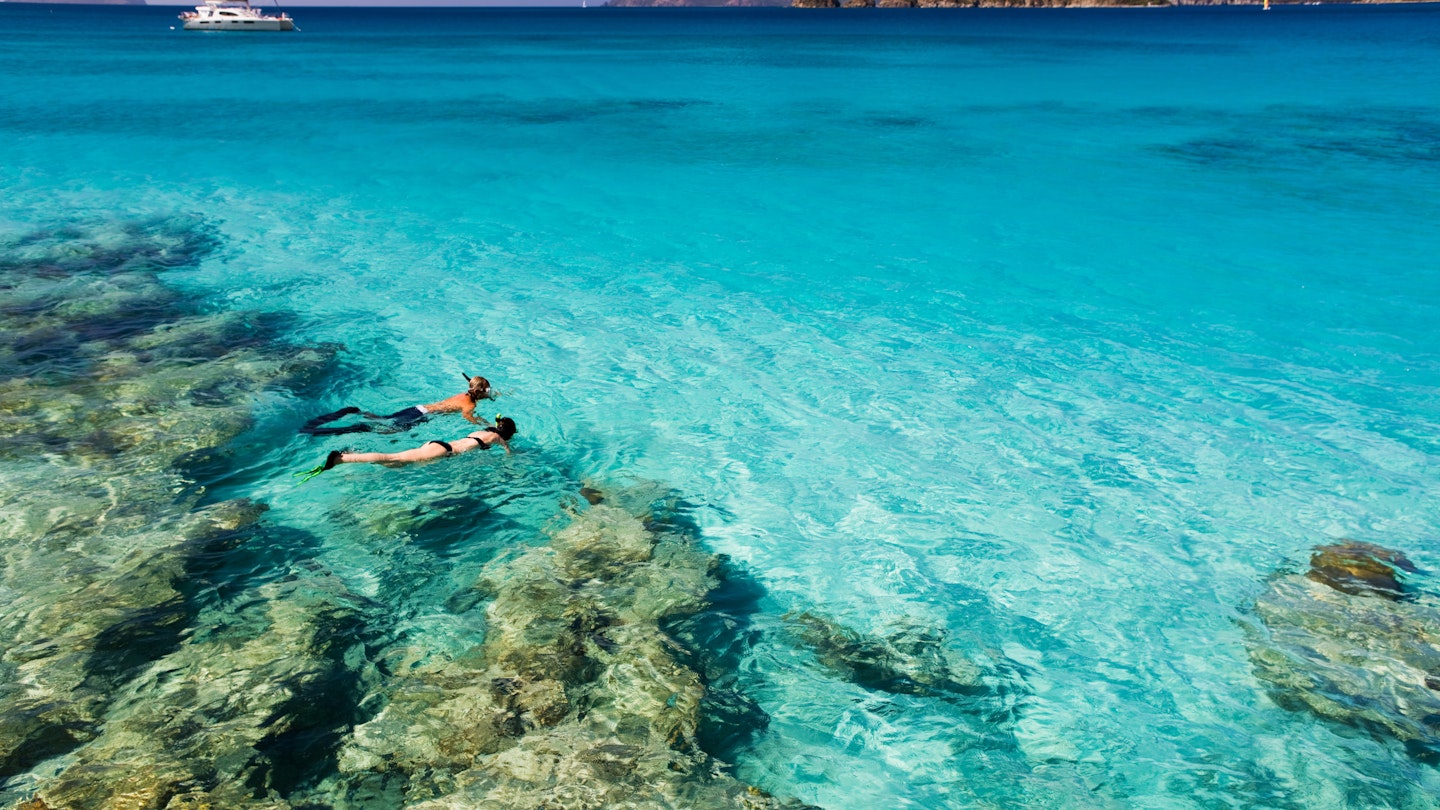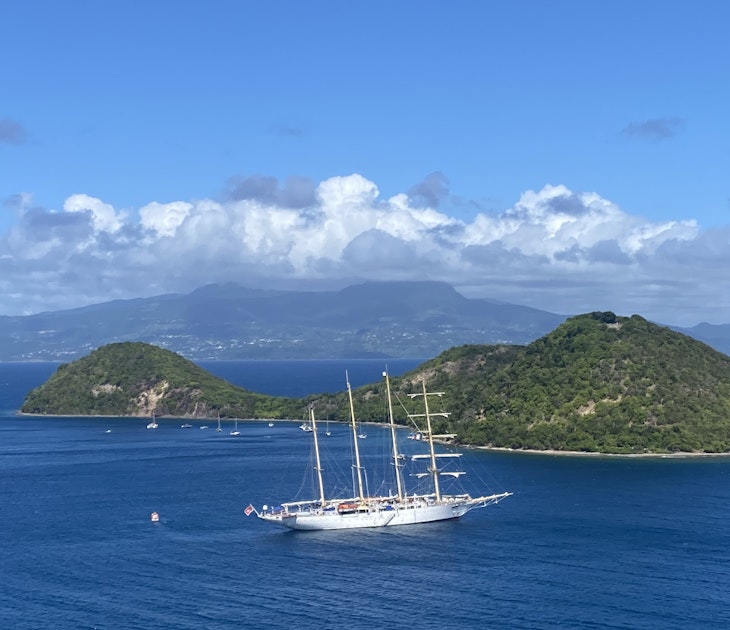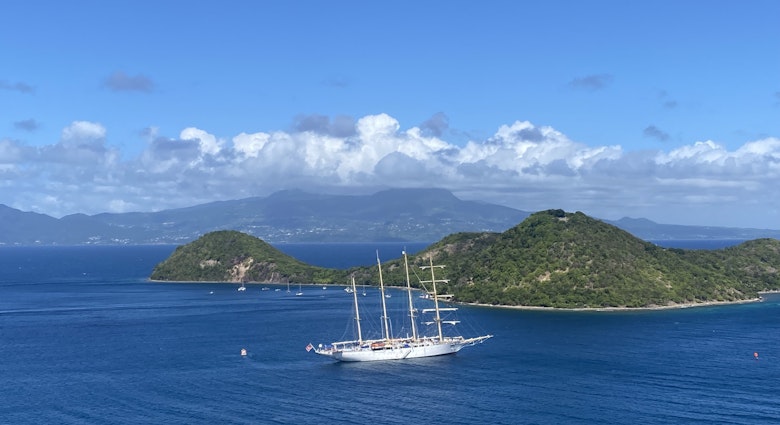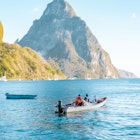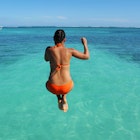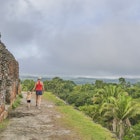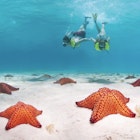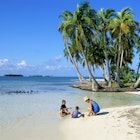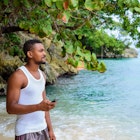Kaleidoscopic tropical fish, spectacular coral reefs and year-round warm waters make the Caribbean one of the best places for snorkeling in the world. Many of the island nations in this part of the world have marine reserves offering pristine snorkeling conditions, and some are close enough to shore that you can swim right off the beach.
However, visibility in the water can vary enormously, and hurricane season has caused extensive damage in some areas. With that in mind, here are eight of the best places to snorkel in the Caribbean and what you can expect to see while there.
1. Molinere Beauséjour Marine Protected Area, Grenada
Best for underwater art
When Hurricane Ivan whipped through the Caribbean in 2004, it caused considerable damage to Grenada's Molinere Bay. To help re-establish the habitat, Grenada’s Ministry of Fisheries commissioned British sculptor Jason deCaires Taylor to create the world’s first underwater art gallery.
Made from pH-neutral cement and steel, the artworks were designed to be coral nurseries that would eventually disappear from view. And it worked – small, colorful colonies quickly flourished and drew back marine life like parrotfish and flounder. There are 75 sculptures altogether. Perhaps the most famous of these is Vicissitudes, which depicts a circle of children holding hands while facing out to sea.
Planning tip: The area is only accessible by boat. Water depths are between five and eight meters, so not all of the artworks are clearly visible from the surface – for a closer look, book a guided dive.
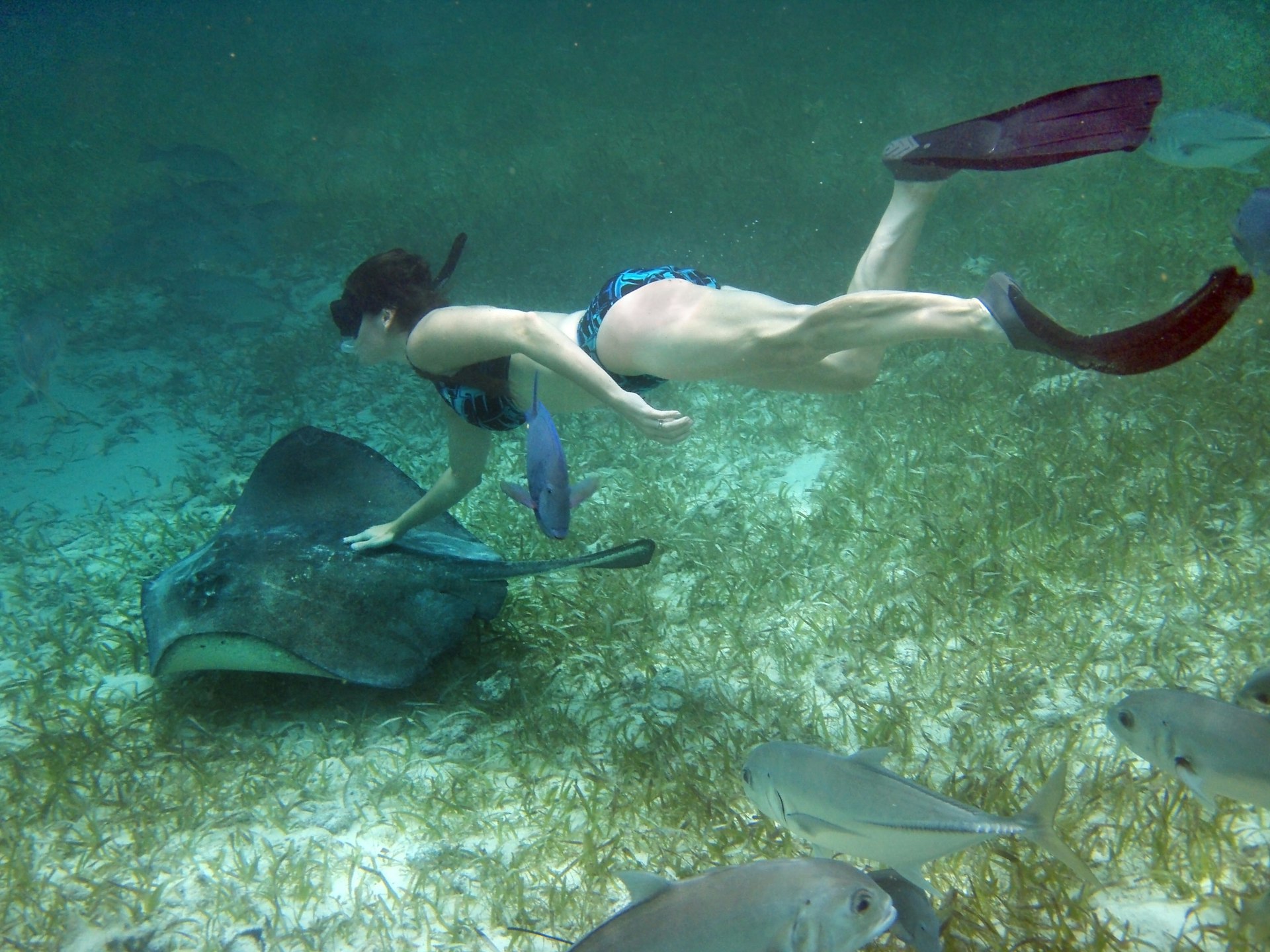
2. Hol Chan Marine Reserve, Belize
Best for spotting sharks
Located on the border with Mexico, Belize’s Hol Chan Marine Reserve covers over 41,700 hectares of land and sea around Ambergris Caye, with habitats ranging from dense mangroves and seagrass meadows to coral reefs.
The Coral Garden is the highlight. There’s an outer reef catching the bigger waves, allowing you to drift over columns of coral in peace as sergeant majors and butterfly fish swim past. Most tours will also visit nearby Shark Ray Alley, where shivers of nurse sharks like to congregate.
Planning tip: Some guides will feed the sharks to attract them to the boat, so double-check with the operator if you don’t want to do this.
3. Anse Chastanet Beach, St Lucia
Best for snorkeling off the beach
With an unobstructed view of the Piton mountains, Anse Chastanet also happens to be one of the best snorkeling spots in St Lucia, with options for beginners and more experienced snorkelers right off the beach.
The main reef is part of a marine reserve in the bay and is a short swim away from the beach. It’s roped off and clearly marked with buoys, so it’s easy to explore without worrying about boat traffic. Trumpetfish and angelfish are among the most prevalent species here, but you may also spot moray eels.
Planning tip: Anse Chastanet is a public beach with free parking in the area, although most visitors arrive by boat.
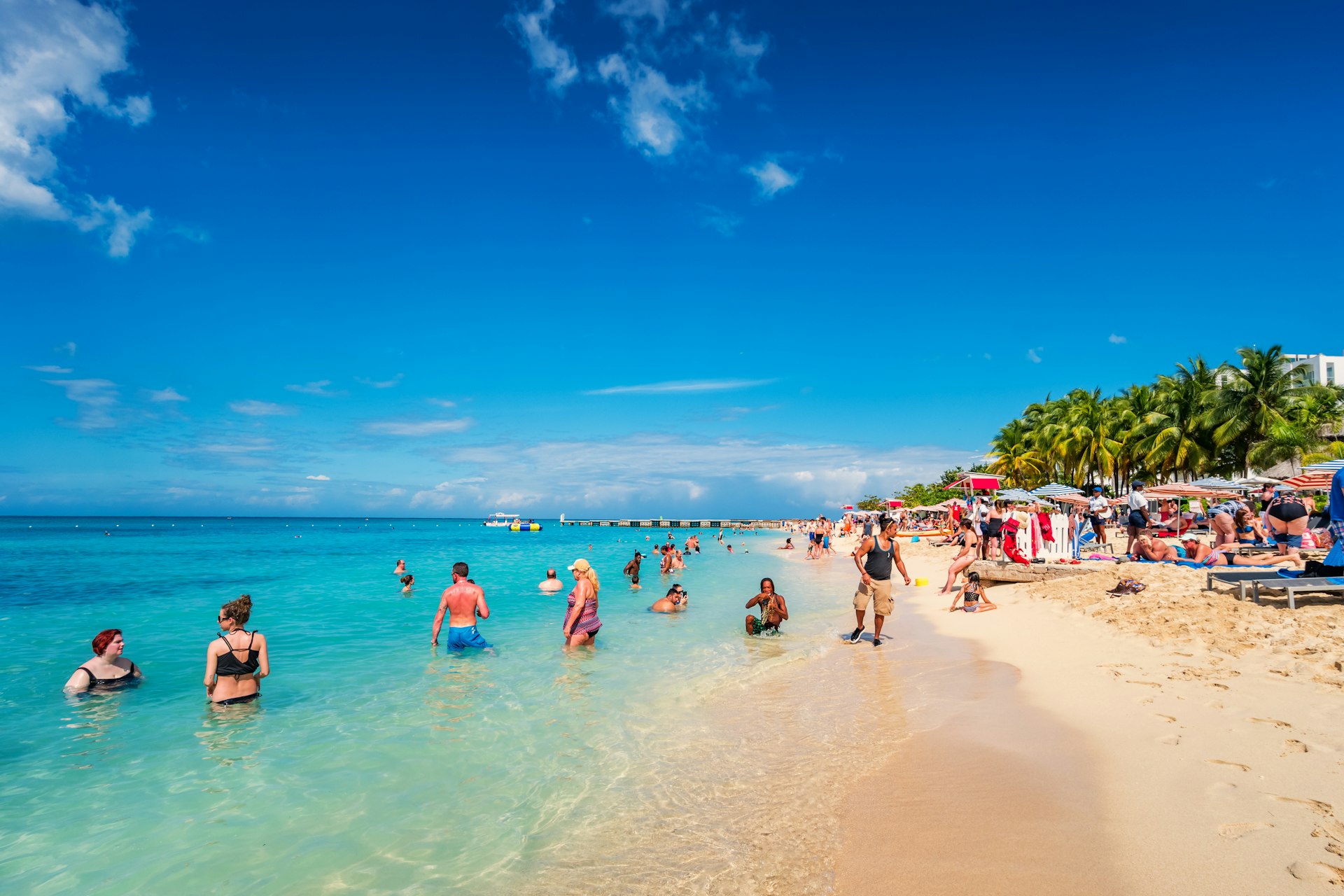
4. Doctor’s Cave Beach, Jamaica
Best for families
The waters around Jamaica can get quite rough, so the calm seas off Doctor’s Cave Beach make a welcome change, especially for beginners and those traveling with children.
The beach is part of Montego Bay Marine Park, so the petite reefs are protected. To see them, you can swim out from the beach or jump into the deeper waters from the pier.
Sergeant majors school here, and you’ll see parrotfish nibbling at the coral. Occasionally the stunning but incredibly poisonous lionfish will also swim through – they’re harmless as long as you don’t approach them.
Planning tip: There’s an entry fee of US$6, which gives you access to changing rooms, showers and toilets. You can rent sun loungers and umbrellas for the day and grab lunch and drinks from the beachside restaurants.
5. Mullet Bay, Sint Maarten
Best for spotting puffer fish
With aquamarine waters and powder-soft sand, Mullet Bay is often considered one of the finest beaches in Sint Maarten (the Dutch side of this tropical island). And while the snorkeling off the public beach is a bit more limited compared to elsewhere in the Caribbean – most of the fish congregate around a rocky outcrop – it is an excellent spot if you want to see puffer fish in the shallows.
The sea is generally calm here. But the island’s location means that trade winds can whip up the surf between November and April, making the waters unsuitable for beginners.
Planning tip: On the weekends, the beach packs out with locals; if you’re looking for space to soak up the views, come during the week.
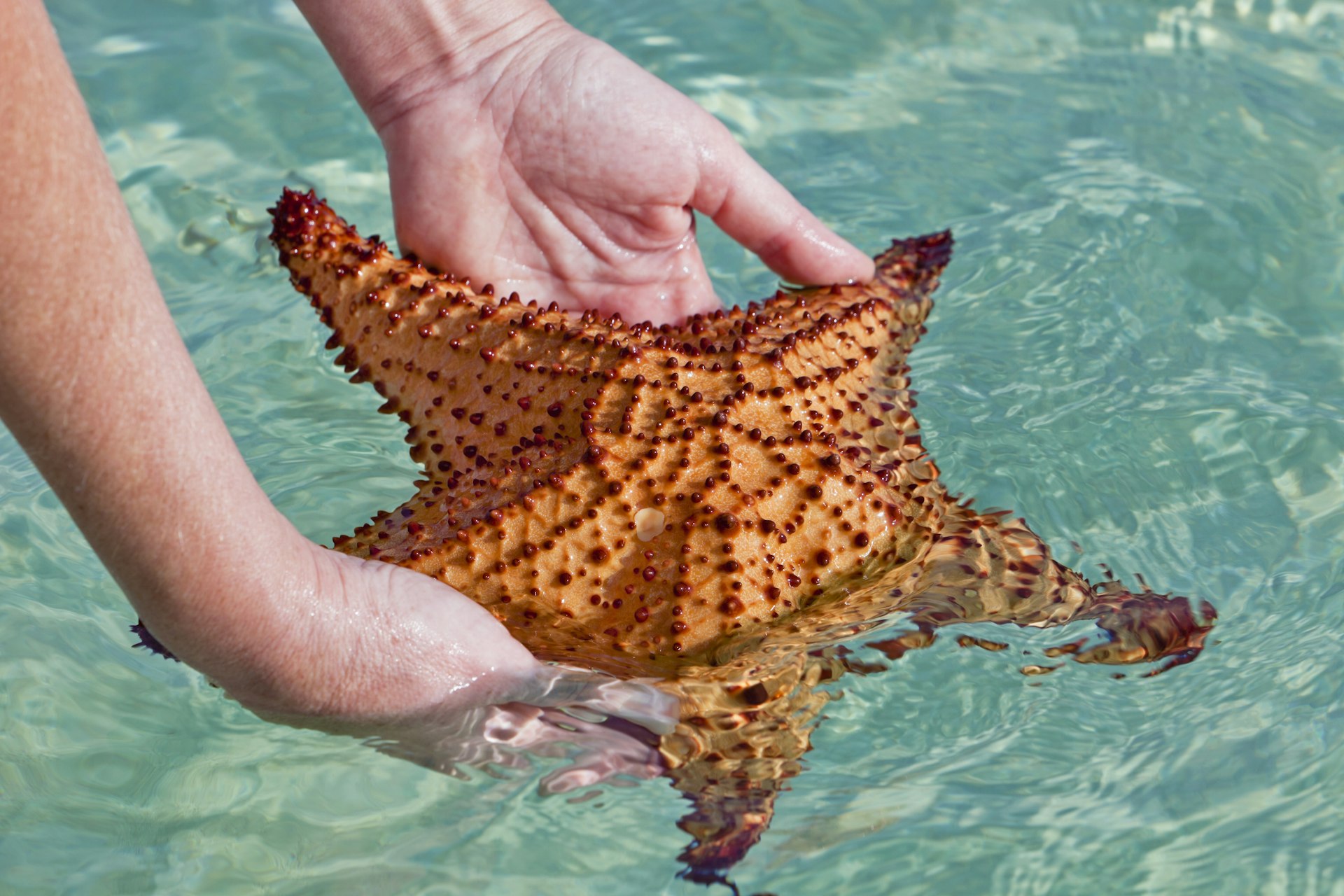
6. Starfish Point, Grand Cayman
Best for seeing starfish
You rarely see just one type of animal when snorkeling, but at Starfish Point (a remote stretch of beach near Rum Point) in Grand Cayman, you literally come just for the star attraction: the red cushion starfish.
Sighting is pretty much guaranteed, but the numbers are not; there could be anywhere between a couple to a few dozen starfish in the shallows. And they really are found in the shallows here – the water is just ankle-deep in some spots, so you won’t need any fins.
Planning tip: Some Stingray City tours will stop by Starfish Point at the end of the day, so if you want to have the whole place to yourself, drive down in the morning.
7. Smith’s Reef, Turks and Caicos
Best for corals
The coral diversity is particularly impressive at Smith’s Reef in Turks and Caicos; striking fan coral, as well as colorful sponges and floaty soft coral, all cluster in what’s a relatively small area. And unlike some of the more accessible spots in the region, they’re generally in pretty good condition.
Coupled with nearby seagrass meadows, the waters here are also home to some interesting marine life. There’s a good chance of spotting sea turtles and eagle rays by day, and squid will come out to feed at night.
Planning tip: The reef is accessible from the beach at Turtle Cove Marina, but it can be a bit of a trek, so book a boat trip if you don’t fancy the walk.
8. Carlisle Bay Marine Park, Barbados
Best for shipwrecks and turtles
Carlisle Bay Marine Park is home to seven shipwrecks, all of which have been deliberately sunk. As well as creating new habitats for fish, they’ve become interesting areas to explore for divers and snorkelers in their own right.
The shallowest of these – the barge – is a mere three meters beneath the water's surface. Schools of tropical fish will dart through the hulls at regular intervals, and turtles are also usually spotted here.
Planning tip: You can join a guided snorkeling tour, but the wrecks are close enough to the shore – about 200 meters – to simply swim out from the beach.

